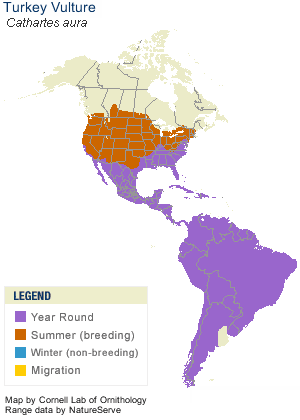Turkey Vulture
Zorro

About Zoro
In September 2008, the Wildlife Education and Rehabilitation Center received a call reporting what appeared to be an injured Turkey Vulture in a Morgan Hill field. . When the caller went back to locate the bird so it could be rescued and brought to WERC, he found that it had disappeared. A week later, the young Turkey Vulture was seen hanging around WERC's large flight enclosure, inside which resided "Pacheco", an older Turkey Vulture being rehabilitated for an injured wing. The juvenile (his head and beak are still grey) must have hopped and "turkey-trotted" for over a mile to find WERC! For two weeks, the young vulture could be seen every morning either on top of the enclosure, perching in a low tree nearby, or walking around the neighbor's field. On closer look through binoculars, it was apparent that its wing was awkwardly bent, though the bird was able to fly short distances at least.
How to catch the vulture so it could be examined closely and given treatment, if necessary? For 2 weeks, WERC improvised different methods of capture, which failed due to the alertness and keen senses of the wily bird. Finally, volunteers were able to confine the vulture. A follow-up veterinary examination confirmed a healed fracture of the left wing, possibly caused by a vehicle collision while the bird was eating on the road. The injury was permanent and the vulture would never be able to fly well. For the next 2 years, the TV remained at WERC to recuperate and to determine whether it would be suitable for education. In August 2010, WERC received permission from the USFWS and the bird was named Zorro because his outstretched wings resembled a magnificent black cape.

Turkey Vulture Facts
Cathartes aura (means "cleansing breeze")
Length: 26-32" Wingspan: 68-72" Weight 4 lbs (1830 gms)
Range: Throughout United States to Mexico
Habitat: Wide range-forests, deserts, grasslands
Life span: In captivity-43 years; in the wild--17 years
Diet: Scavengers of fresh and rotten carrion (road kill); if startled, they will regurgitate (vomit) food and will eat the vomit later. Unlike almost all other birds, vultures have an exceptionally keen sense of smell and can detect freshly dead food from a distance.
Voice: Hissing & clucking sounds (seldom heard)
Nesting: On ground or hollow logs; monogamous; both parents brood and feed their young
Behavior: Struts on the ground; Soars with wings held in shallow V called a dihedral
Social, non-aggressive bird; large communal groups can be found roosting in trees and gliding in thermals (warm, rising air) for hours at a time over hillsides. Groups of vultures in the air are called a "kettle". Perch atop trees and poles with wings fully extended, called the "horaltic pose." This behavior allows the warmth of the sun to kill bacteria on their body, an important habit due to their dietary preferences. Though similar to raptors, they are more closely related to storks and don't kill prey and can't carry off food in their talons.
